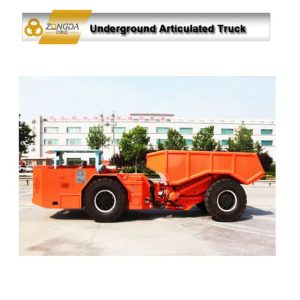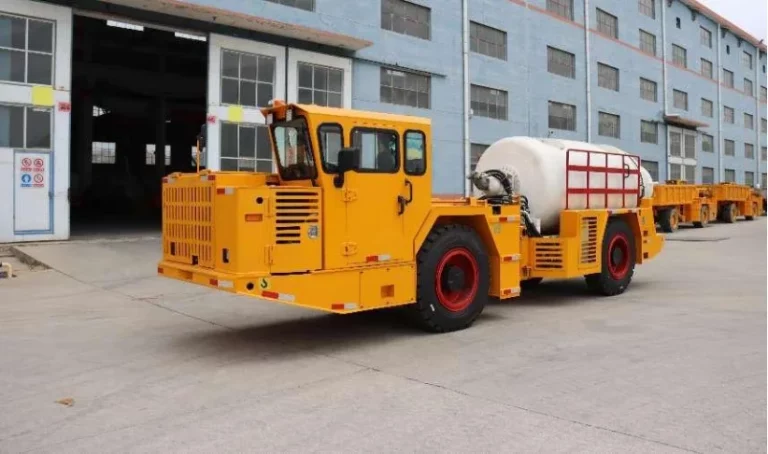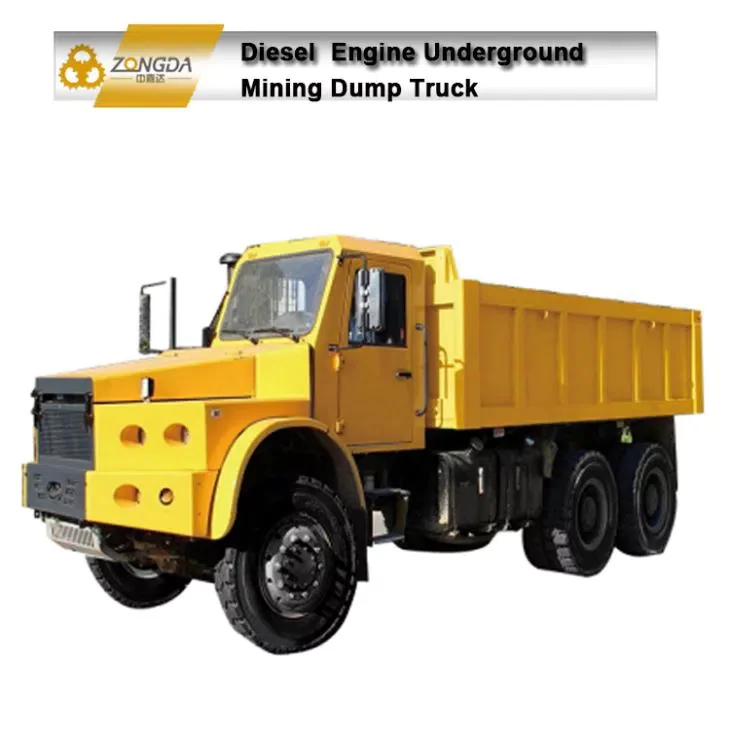The underground mining sector is going through a change due, to advances in technology and a growing emphasis on sustainability. With the rising need for minerals and resources and the increasing complexity of mining operations underground mining trucks are adapting to address these changes. This piece delves into the advancements in underground mining truck technologies discussing the progress, new tech trends, sustainability efforts, as well as the impact of smart connectivity and data analysis, on shaping the industrys future.
Evolution of Underground Mining Trucks
Historical Overview
Mining trucks used in operations have evolved significantly over the years. Initially they were basic. Focused, on moving materials. However with time improvements have been made in terms of load capacity, maneuverability and overall effectiveness. These advancements were shaped by the progress of each era resulting in vehicles designed for specific underground environments.
Key Milestones in Technological Advancements
Recently the integration of drives and enhanced braking systems has been a game changer, for mining trucks. Automation features have been incorporated into the machinery leading to efficiency and safety. Moreover the introduction of articulated trucks has enhanced their ability to maneuver through areas and rough terrain. These advancements have not improved. Also paved the way, for future innovative designs.
Influence of Innovations on Mining Efficiency
New developments, in mining truck technology have significantly boosted efficiency and safety in mining activities. Improved tracking systems and advanced payload monitoring have made planning efficient reducing operational delays. These progressions enable mining enterprises to optimize their output while prioritizing the safety of workers highlighting the significance of advancements, in the industry.
Emerging Technologies in Underground Mining Trucks
Automation and Robotics Integration
The incorporation of automation technologies, into mining trucks represents a change, in the industry.
Autonomous Operation Systems
There is a growing trend, towards operation with companies investing significantly in technologies that enable trucks to function without human involvement. These advanced systems use sensors and mapping tools to navigate and work effectively in underground settings. This leads to safety by eliminating exposure, to risky situations while also maximizing productivity through uninterrupted operational capabilities.
Remote Control Capabilities
Besides having the ability to operate independently controlled underground mining trucks offer a solution that combines supervision, with technological advancement. Operators can oversee vehicles from a location providing greater operational flexibility. This approach improves safety. Enables operators to handle trucks in hazardous environments where human intervention could be risky.
Electrification and Hybrid Solutions
Another major trend in underground mining truck technology is the shift toward electrification and hybrid solutions.
Battery-Powered Mining Trucks
Battery-powered trucks represent a significant opportunity to reduce emissions and operating costs. These vehicles can operate with lower noise levels and zero exhaust emissions, contributing to healthier working environments underground. As battery technology continues to improve, the range and performance of these trucks are also set to expand, making them a viable option for various applications.
Fuel Cell Technology Adoption
Fuel cell technology is another avenue potentially transforming underground mining operations. By utilizing hydrogen, fuel cells can provide energy without producing harmful emissions. This transition mirrors broader global movements toward cleaner energy sources, aligning with environmental sustainability goals within the mining sector.
Advanced Safety Features
The safety of personnel remains a key concern in underground mining operations; therefore, advanced safety features are crucial in the design of modern underground mining trucks.
Collision Avoidance Systems
Collision avoidance systems equipped with sensors and cameras can identify imminent dangers, allowing trucks to respond proactively to avoid accidents. This technology reduces the risk of collisions between vehicles and other equipment or personnel, enhancing overall safety within the mining environment.
Real-time Monitoring and Diagnostics
Real-time monitoring and diagnostics have become standard features in advanced underground mining trucks. These systems provide critical data on vehicle health and performance, enabling timely interventions before minor issues develop into major problems. By enhancing the reliability of equipment, companies can further minimize downtime and associated costs.
Sustainable Developments and Environmental Impact
Eco-Friendly Materials and Designs
Sustainability in underground mining truck design is becoming increasingly important. Manufacturers are exploring eco-friendly materials that have a reduced environmental impact during production and throughout the truck’s operational life. Lightweight materials can improve fuel efficiency, while recyclable components contribute to a more sustainable lifecycle for mining equipment.
Emission Reduction Strategies
The push for lower emissions is driving innovations across the mining truck industry. Strategically implementing hybrid and electric technologies reduces reliance on traditional fossil fuels, contributing to cleaner operations. In tandem with policies aimed at reducing emissions, underground mining companies are advancing towards greener alternatives that support their environmental responsibilities.
Energy Efficiency Improvements
Energy efficiency remains a focal point for advancements in underground mining truck technology. Enhanced designs are being developed to minimize energy consumption during operation, such as improved aerodynamics and lighter structures. Ongoing innovations will likely lead to further reductions in energy usage, ensuring that underground mining trucks operate as sustainably as possible while maintaining productivity.
Challenges and Opportunities in Implementation
Technological Barriers and Solutions
The integration of advanced technologies in underground mining trucks brings about certain challenges, chiefly stemming from the existing infrastructure and technical limitations. Adopting more sophisticated automation and electrification solutions requires substantial modifications to current mining setups, which may not be immediately feasible. Addressing these technological barriers demands collaboration among manufacturers, mining companies, and regulatory bodies to streamline the integration processes. Solutions such as modular designs and upgradeable components are making it easier for companies to transition to new technologies without complete overhauls, allowing for gradual implementation.
Economic Considerations
Economic factors play a crucial role in the implementation of advanced underground mining truck technologies. Companies must assess the initial capital investments needed for new technologies against long-term operational savings and productivity gains. While the prospect of reduced operating costs through automation and emissions control technologies is appealing, market fluctuations and commodity prices can create uncertainty. Thus, comprehensive cost-benefit analyses considering both direct financial impacts and broader economic shifts will enable companies to make informed decisions regarding upgrades and new investments in underground mining trucking technologies.
Workforce Training and Adaptation
As mining truck technologies evolve, so too must the workforce that operates and maintains them. Training becomes an essential facet of implementing advanced vehicle systems, particularly in automation and remote operation. Companies will need to develop tailored training programs aimed at equipping workers with the necessary skills to adapt to new technologies while fostering a culture of continuous learning. Additionally, the ongoing evolution of underground mining truck technologies will create opportunities for workers interested in advancing their careers within the industry, offering them the chance to engage in high-tech, innovative environments.
Exploring Zongda’s Role in Future Mining Technologies
Company’s Vision and Mission Statements
Zongda, a player, in the mining truck industry is dedicated to shaping the future of mining by introducing new solutions and sustainable practices. The companys goal is to combine technologies with eco methods to improve mining efficiency. Zongdas mission emphasizes its commitment to providing top notch equipment that caters to the changing demands of the sector while focusing on safety and environmental sustainability for both workers and nature. With this approach Zongda is poised to lead the way, in advancing mining truck technologies.
Pioneering Technological Innovations by Zongda
Recent Product Launches
Zongda has made progress, in introducing state of the art mining trucks to tackle modern challenges. Recent product launches demonstrate a blend of automation, electrification and eco friendly design solidifying Zongdas reputation as an industry innovator. These vehicles feature cutting edge automation and monitoring technologies that improve safety and maximize efficiency. Additionally Zongdas commitment to improving energy efficiency aligns with the industrys sustainability trend positioning their trucks as an option, for mining operations.
Strategic Collaborations
Establishing collaborations plays a role, in advancing the progress and implementation of cutting edge mining technologies. Zongda has actively joined forces with technology firms and academic organizations to improve the functionalities of its mining vehicles. Through these partnerships Zongda gains access, to knowledge and resources promoting creativity and expediting the integration of technologies. By collaborating with allies Zongda not enhances its range of products but also contributes significantly to addressing common issues within the industry including safety and environmental concerns.
Future Roadmap for Zongda
Zongdas upcoming plans prioritize a dedication to continually improving and adjusting to meet market demands. They are investing in research and development to support the creation of cutting edge mining trucks that feature automation and smart technologies. Additionally Zongda is looking into electrification options and performing battery systems to align with the industrys efforts to reduce emissions and improve operational efficiency. Through a focus, on innovation and teamwork Zongda aims to solidify its position as a leader, in the mining industry while catering to the changing needs of its clients.
Potential Impact on the Industry
Improved Operational Efficiency
The progress, in mining truck technologies marks the beginning of an era of operational effectiveness in the field. By combining automation and telematics there is an improved insight into fleet operations and performance analysis, in time. As a result mining firms can simplify procedures reduce downtimes and optimize resource distribution. Enhanced operational efficiency not leads to increased productivity. Also results in cost reductions overall enabling companies to stay competitive in a demanding market environment.
Enhanced Worker Safety
Safety remains a concern, in the development of mining truck technology. The inclusion of safety measures like collision avoidance systems and real time monitoring greatly lowers the chances of on the job accidents. Implementing trucks that can operate autonomously helps enhance safety standards by reducing the need for workers in areas. This dedication to safety not safeguards employees. Also promotes a culture of accountability and care, within mining companies.
Environmental Benefits
In light of the sustainability issues faced by the mining sector the emergence of technologies, for mining trucks presents notable environmental advantages. The use of electric and hybrid trucks aids in lowering greenhouse gas emissions bringing mining activities in line with sustainability goals. Furthermore incorporating materials in production and implementing emission reduction tactics can lead to a substantial reduction in the industrys ecological impact. Embracing these advancements showcases a dedication to mining practices positioning the sector as a contributor, to tackling global environmental issues while upholding operational efficiency.






